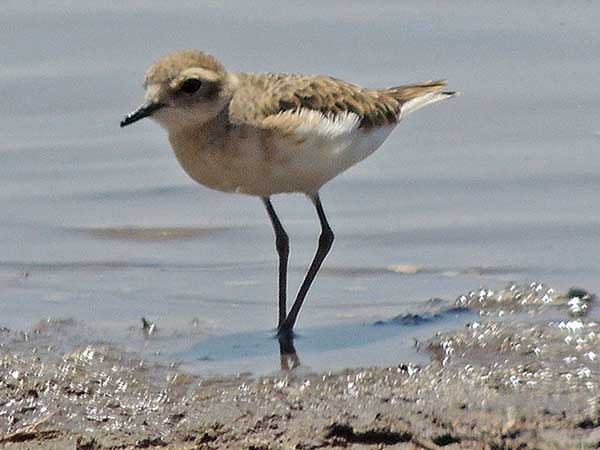Kittlitz's Plover
Charadrius pecuarius

Observed at Nairobi National Park, Kenya, Kenya. January 2014.
From Wikipedia: The adult Kittlitz’s plover is 14–16 cm long. In breeding plumage it has a grey-brown back, crown, and wings, an orange breast shading to white on the lower belly, and long dark grey legs. The forehead and throat are white, with black lores and a black frontal bar, the latter extending as a stripe down the sides of the neck and around the hind neck. In winter, the adults lose the distinctive face pattern and resemble Kentish plovers, but they are smaller, longer-legged and longer-billed. They have less uniform upperparts than Kentish, and always show a pink or orange breast colouration. Juvenile Kittlitz’s plovers are similar to winter adults, but the underpart colour is often restricted to just a narrow gorget. In flight, the primary flight feathers are dark with a short white wing bar. The Kittlitz’s plover forages for food on open dry mud and short grass, usually close to water. The specific name, pecuarius, means "grazer", referring to the grassland habitat. It hunts usually by sight for invertebrates including insects, earthworms, crustaceans, and molluscs. The call is a plaintive tee peep and may give a hard trip when alarmed.
Charadriidae -- Plover Family
Books:
- Birds of Kenya and Northern Tanzania by Zimmerman et al.
- Birds of East Africa by Stevenson and Fanshawe